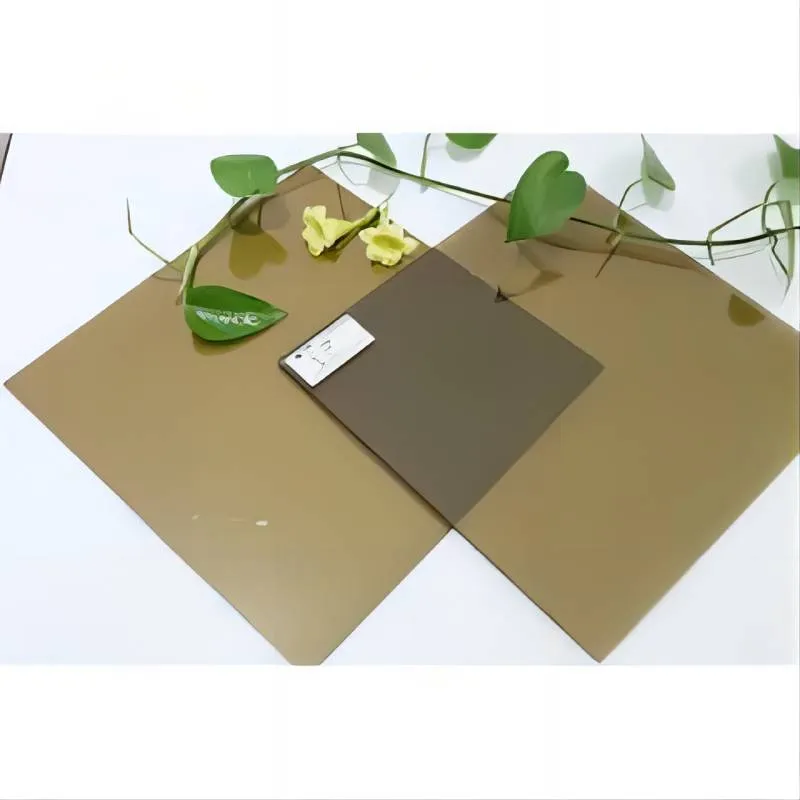Thermal Tempering of Glass An Overview
Thermal tempering, also known as heat treatment or heat strengthening, is a process widely used in the glass manufacturing industry to enhance the strength and thermal resistance of glass products. This method is crucial for applications where safety, durability, and thermal performance are paramount. Understanding the principles and advantages of thermal tempering can provide valuable insights into its significance in modern glass applications.
The thermal tempering process involves heating glass to a temperature near its softening point, typically between 600°C and 700°C, and then rapidly cooling it through a series of controlled processes. This thermal cycling alters the internal structure of the glass, creating compressive stresses on its surface. These compressive stresses counteract tensile stresses that occur during thermal or mechanical loading, significantly enhancing the glass's strength and performance.
Thermal Tempering of Glass An Overview
In addition to thermal resistance, thermal tempered glass also boasts improved mechanical strength compared to standard glass. The process effectively reduces the risk of breakage during handling and installation, making it a preferred choice for various applications, including structural and architectural glazing. When compared to regular float glass, tempered glass can be up to five times stronger, making it suitable for high-impact situations.
thermal tempering of glass
Another significant advantage of thermal tempering is safety. When traditional glass breaks, it shatters into sharp, jagged shards, which can pose a serious risk of injury. In contrast, when thermal tempered glass breaks, it crumbles into small blunt pieces, reducing the potential for injury. This characteristic makes tempered glass particularly desirable for use in public spaces, where safety is a critical concern.
The application of thermal tempered glass spans a wide range of industries. In architecture, it is often used for large glass façades, windows, and curtain walls, offering aesthetic appeal while ensuring safety and durability. In the automotive sector, tempered glass is commonly used for windshields and side windows, where impact resistance is critical. Additionally, the hospitality industry utilizes thermal tempered glass in shower enclosures and partition walls, creating a modern, elegant touch while maintaining safety standards.
Despite its many benefits, thermal tempering does come with some limitations. The process is more expensive compared to non-tempered glass, which can impact overall project costs. Furthermore, once glass has been tempered, it cannot be cut or altered without risking breakage, requiring careful planning during the design phase.
In conclusion, thermal tempering is an essential process in the glass industry that enhances the strength, thermal resistance, and safety of glass products. Its ability to withstand thermal shock and mechanical stress makes it indispensable for a variety of applications across different sectors. As technology advances and the demand for high-performance materials grows, thermal tempered glass will continue to play a vital role in shaping modern architecture, automotive design, and consumer products.
 Afrikaans
Afrikaans  Albanian
Albanian  Amharic
Amharic  Arabic
Arabic  Armenian
Armenian  Azerbaijani
Azerbaijani  Basque
Basque  Belarusian
Belarusian  Bengali
Bengali  Bosnian
Bosnian  Bulgarian
Bulgarian  Catalan
Catalan  Cebuano
Cebuano  Corsican
Corsican  Croatian
Croatian  Czech
Czech  Danish
Danish  Dutch
Dutch  English
English  Esperanto
Esperanto  Estonian
Estonian  Finnish
Finnish  French
French  Frisian
Frisian  Galician
Galician  Georgian
Georgian  German
German  Greek
Greek  Gujarati
Gujarati  Haitian Creole
Haitian Creole  hausa
hausa  hawaiian
hawaiian  Hebrew
Hebrew  Hindi
Hindi  Miao
Miao  Hungarian
Hungarian  Icelandic
Icelandic  igbo
igbo  Indonesian
Indonesian  irish
irish  Italian
Italian  Japanese
Japanese  Javanese
Javanese  Kannada
Kannada  kazakh
kazakh  Khmer
Khmer  Rwandese
Rwandese  Korean
Korean  Kurdish
Kurdish  Kyrgyz
Kyrgyz  Lao
Lao  Latin
Latin  Latvian
Latvian  Lithuanian
Lithuanian  Luxembourgish
Luxembourgish  Macedonian
Macedonian  Malgashi
Malgashi  Malay
Malay  Malayalam
Malayalam  Maltese
Maltese  Maori
Maori  Marathi
Marathi  Mongolian
Mongolian  Myanmar
Myanmar  Nepali
Nepali  Norwegian
Norwegian  Norwegian
Norwegian  Occitan
Occitan  Pashto
Pashto  Persian
Persian  Polish
Polish  Portuguese
Portuguese  Punjabi
Punjabi  Romanian
Romanian  Russian
Russian  Samoan
Samoan  Scottish Gaelic
Scottish Gaelic  Serbian
Serbian  Sesotho
Sesotho  Shona
Shona  Sindhi
Sindhi  Sinhala
Sinhala  Slovak
Slovak  Slovenian
Slovenian  Somali
Somali  Spanish
Spanish  Sundanese
Sundanese  Swahili
Swahili  Swedish
Swedish  Tagalog
Tagalog  Tajik
Tajik  Tamil
Tamil  Tatar
Tatar  Telugu
Telugu  Thai
Thai  Turkish
Turkish  Turkmen
Turkmen  Ukrainian
Ukrainian  Urdu
Urdu  Uighur
Uighur  Uzbek
Uzbek  Vietnamese
Vietnamese  Welsh
Welsh  Bantu
Bantu  Yiddish
Yiddish  Yoruba
Yoruba  Zulu
Zulu 

